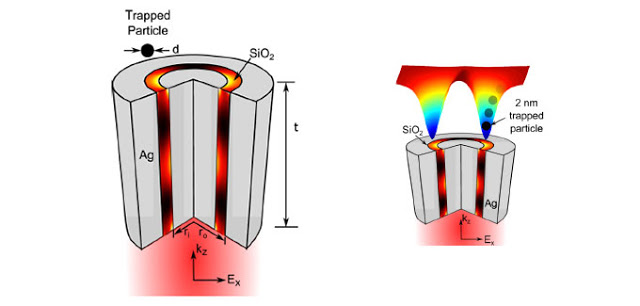

| Visitors Now: | |
| Total Visits: | |
| Total Stories: |

| Story Views | |
| Now: | |
| Last Hour: | |
| Last 24 Hours: | |
| Total: | |
New optical tweezers trap specimens just a few nanometers across
From
A microscale technique known as optical trapping uses beams of light as tweezers to hold and manipulate tiny particles. Stanford researchers have found a new way to trap particles smaller than 10 nanometers – and potentially down to just a few atoms in size – which until now have escaped light’s grasp.
To grasp and move microscopic objects, such as bacteria and the components of living cells, scientists can harness the power of concentrated light to manipulate them without ever physically touching them.
Now, doctoral student Amr Saleh and Assistant Professor Jennifer Dionne, researchers at the Stanford School of Engineering, have designed an innovative light aperture that allows them to optically trap smaller objects than ever before – potentially just a few atoms in size.
The process of optical trapping – or optical tweezing, as it is often known – involves sculpting a beam of light into a narrow point that produces a strong electromagnetic field. The beam attracts tiny objects and traps them in place, just like a pair of tweezers.
Unfortunately, there are natural limits to the technique. The process breaks down for objects significantly smaller than the wavelength of light. Therefore, optical tweezers cannot grasp super-small objects like individual proteins, which are only a couple of nanometers in diameter.
Saleh and Dionne have shown theoretically that light passed through their novel aperture would stably trap objects as small as 2 nanometers.
This illustration shows the new aperture design (left) with two layers of silver separated by another of silicon dioxide. The structure focuses light in a novel way to trap particles smaller than ever before. The focused beams are shown in the illustration on the right.
See more and subscribe to NextBigFuture at 2012-12-07 16:22:27 Source: http://nextbigfuture.com/2012/12/new-optical-tweezers-trap-specimens.html
Source:



